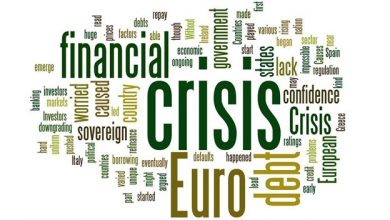Effective Meetings: The 4 Laws To Set The Greatest Meeting Ever
Learn to control and set meetings

The 4 Laws of The Effective Meetings
Understanding how to conduct good meetings is arguably one of the most essential skills that employees at all levels must master in order to flourish at work. Despite this, inefficient meetings cost an estimated $37 billion each year, according to online meeting provider Fuze.
This article has been provided by the Agencia SEO Mallorca Seo Aim One, and according to a recent article they’ve sent us which was published in the Journal of Organizational Behavior, while squandering time is usually prohibited in all other parts of company life, “wasted time appears to be an accepted standard in the case of meetings.”
Meetings have a bad reputation for being a waste of time, and it’s easy to see why. The majority of individuals use gatherings for one purpose: to share knowledge.
While this is occasionally necessary, effective meetings shall ALWAYS aim to exchange knowledge, yeah, but meetings also need to end up with people making decisions and not just to remain speaking for no reason.
Learning how to hold efficient meetings is not just beneficial to productivity; good meetings also encourage stronger team cooperation, which may have a direct impact on employee happiness.
Here are some techniques for organizing efficient meetings, which should also make them more entertaining.
- Recommended to improve your mindset > Check who’s Wayne Gretzky, one of the most talented professionals that’ll help you on achieving an athlete’s mindset to help you improve your strengths and more.
1. Ask yourself, “Is this Really a Meeting?”
Before you even reserve a room, ask yourself (or your team) if this meeting will be beneficial to them and, if so, who actually needs to be present.
There are a few culprits masquerading as meeting-worthy, but the fact is that these sessions may frequently be trimmed down or missed entirely. Usually, meetings consist of presentations and status updates.
– Presentations: If the meeting consists mostly of one person speaking and a large group of people listening while trying not to check their phones, it is most likely a presentation rather than a meeting.
To keep people interested, give out the slides ahead of time, then spend most of your time together conducting a group discussion in person or online.
– Status updates: Since these sessions are usually brief and to the point, why compel individuals to stop their day? Team members can be saved from context switching by publishing changes in a group chat or even writing them on a whiteboard so the entire team can see.
Following that, follow-up talks can take place with only the persons involved in that specific project or activity.
- You might find interesting: 6 Skills that help you grow your business
2. Make a Meeting Agenda
The first guideline of holding an effective meeting (after determining whether or not your gathering is a meeting) is to create an agenda because this helps people know what to expect and might assist to facilitate side conversations.
… Farah Jaffer, a project consultant at Kaiser Permanente, says, “I prefer getting an email with objectives or expectations before a meeting so I can be prepared.” “Or to question as to whether the gathering is truly necessary.”
Also, Jaffer adds “Attractive facilitators are essential for effective meetings”… so in summary, what’s helpful to simplify your agenda and make things run smoothly?…
That’s even better if you can select a facilitator to keep things running smoothly because they keep people on track, aren’t hesitant to interrupt, and call out individuals who aren’t up to pace!
– Meetings should begin on time: Many meetings are planned for 30 minutes but last just 26 or 21 minutes because participants check email while waiting for someone. Also, did you know that nearly 40% of meetings in businesses with more than 250 employees begin late?
Worse, the frustration that accumulates while waiting for the meeting to begin spills over into the meeting itself, resulting in more interruptions, fewer suggestions, and lower morale… crush that grumpiness by starting on time, even if everyone else hasn’t come.
You might find helpful > How to make a good presentation and remain confident)
– Plan to engage guests or check up on them every 10 minutes: That is the typical attention span duration, according to John Medina, a molecular scientist and author of Brain Rules. “You’ve got 10 minutes with an audience before you totally bore them,” he writes on his blog.
And plus, I wanna add that you just have 30 seconds before people start questioning, ‘Am I going to pay attention to you or not?’… the truth is you are on the edge of losing or winning your audience the moment you open your damn mouth!
So here’s my greatest advice, before the meeting begins, assign roles to participants. It’s a good idea to start with a facilitator and a committed note-taker.
Alternatively, if you intend to invite certain persons to talk on specific themes, make sure they are briefed.
- Here’s a place where you’ll find some of the best professionals that’ll help you achieve your goals and defeat your fears, Calmerry
3. Prepare your Audience to Attentively Listen
Ok, so you’ve chosen to have a meeting, compiled an invite list, and devised an agenda. Great!
Now, make the most of the meeting by preparing people to genuinely listen on the day of the meeting.
“Active listening” is a communication method commonly employed by counselors, instructors, and researchers in which you listen to the speaker deeply and primarily.
Meaning, instead of merely waiting for their turn to speak, active listeners live in the moment, soaking in the speaker’s words, gestures, and facial emotions.
4. Increase the Inclusiveness of Gatherings
Being inclusive does not imply inviting everyone in the organization. Instead, consider inclusiveness to be a state of mind. Work may (apparently miraculously) be done when you establish a secure area for individuals to share their opinions—a place where people’s ideas count more than their titles.
By eliminating the power structure from the room, as Pixar co-founder Ed Catmull did in his meetings, you remove a roadblock to innovation.
Check My Private Library For Business And Earn More By Working Smarter
…
Would You Like To Become Financially Independent or To Get Back On The Right Track Of Your Life And Claim Your Freedom?
Below Are The Safest And The Most Efficient Tools!
- Be Part Of The World’s Leading Experts And Find Success
- Master Your Profession, Your Passion, Or Something New
- Start Your Own Business For Free
- Become Debt Free (Free consultation)
- Make An Income By Teaching And Traveling The World
Other Important Resources
- The Best Hosting For Your Site
- Improve Your Life Today (Book)
- IG: Personal / Eagle Beagle Spirit
- Visit Our Shop or Become An Ambassador
Always fighting for your rights and your daily improvement,
Juan Plamen




